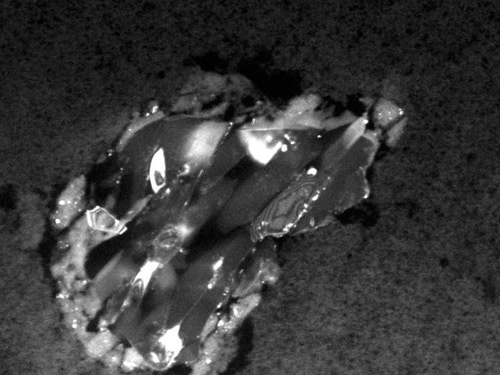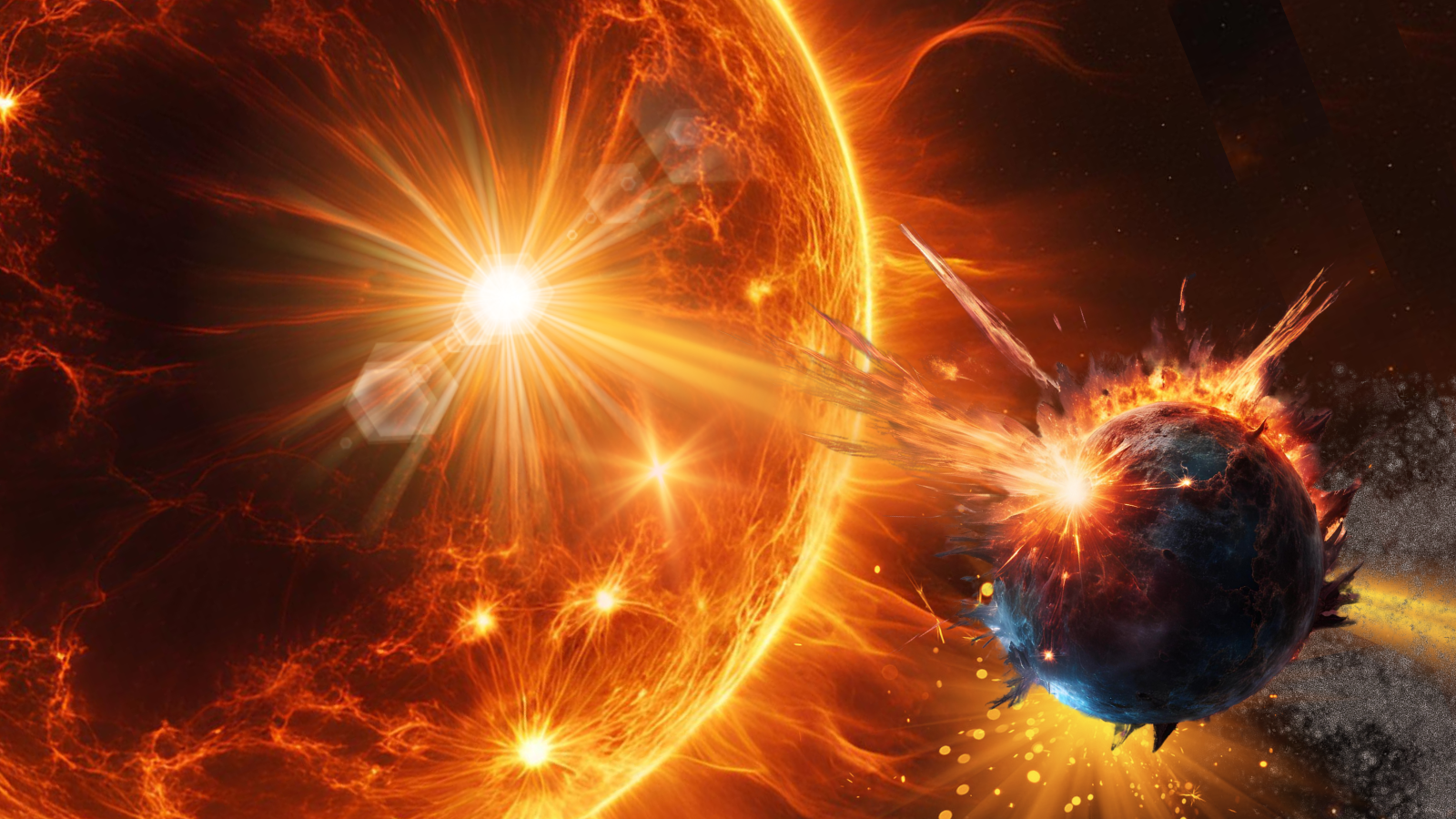NASA's Stardust Comet Samples Contain Minerals Born in Fire

Pieces of acomet returned to Earth by NASA's Stardustspacecraft apparently formed near the Sun or around another star altogether beforebeing flung to the outer edges of the Solar System, mission scientists saidMonday.
Researchersstudying samples of CometWild 2 (pronounced "Vilt 2") embedded in Stardust's gel-filled collector foundthat the minerals formed under extremely high temperatures - such as those neara star - and not in the frigid cold expected at the Solar System's edge, wheremost short-term comets originate.
"In thecoldest part of the solar system we've found samples that formed at extremelyhigh temperatures," said Donald Brownlee, Stardust's principal investigator atthe University of Washington in Seattle, during a Monday press conference. "Whenthese minerals formed they were either red hot or white hot grains, and yetthey were collected in a comet, the Siberia of the Solar System."
The finding- announced on the 20th anniversary of the European probe Giotto's rendezvouswith CometHalley in 1986 - perplexed Stardust researchers and added a new wrinkle inastronomers' understanding of how comets, and possibly the Solar System,formed.
Particlescience
NASA'sStardust sample return capsule landedin the Utah desert on Jan. 15, 2006 after a nearly seven-year mission toretrieve comet and interstellar dust particles in an aerogelcollector. The probe swungpast the 4.5 billion-year-old Comet Wild 2 on Jan. 2, 2004.
Astronomersaren't sure whether the minerals found in Stardust's comet samples formed nearthe Sun or around another star, though isotope scans are expected determinethat for sure in upcoming tests, Brownlee said. Olivine, a mix of iron andmagnesium that appears green on some Earth beaches, is one of the severalsurprising compounds found in the Wild 2 samples, he added.
Breaking space news, the latest updates on rocket launches, skywatching events and more!
MichaelZolensky, Stardust curator and a mission co-investigator at NASA's JohnsonSpace Center (JSC), said astronomers believed that a sort of material "zoning"occurred during the Solar System's formation.
Accordingto the model, substances formed under hotter temperatures closer to the Sun,while colder materials - such as the gases that make up the giant planets -took root further out, he added.
But ifStardust's comet samples are found to be local to the Solar System, and notfrom some distant start, they'd suggest a sort of transportation system tofling particles formed near the Sun out past the orbit of Plutoand into the comet realm, researchers said.
"If thismixing is occurring, as suggested by these results, than how do you preserveany kind of zoning in the solar system," Zolenksy said. "It raises moremysteries."
Awash insamples
Thanks tothe Stardust mission, astronomers have a wealth of comet and dust samples attheir disposal, at least 45 of which large enough to be seen with the nakedeye. But the number of actual samples could range in the millions, researcherssaid.
"We're justlearning how to handle the samples, how make the best use of them," Zolenskysaid. "Once we understand that then we'll open them up for widespread analysis.And that will go on for the rest of our lives."
Stardustresearchers said that all of the probe's 132 sample cells contain cometparticles ranging in size between 15 micrometers - less than the width of ahuman hair - down to about one micrometer, though the interstellar dust samplesare much smaller. The largest of those dust samples can reach one micrometer,they added.
"With everyday that goes by, we're able to handle smaller particles, so hopefully a yearfrom now we'll be able to handle things down to a half a micrometer," Zolenskysaid.
Mission scientistsexpect to scan Stardust's sample cells and release them to the Stardust@homeproject, an effort that allows the public to search for comet and dust samplesusing their personal computers, in a few weeks.
Researchersalso hope to pin down the origin of Comet Wild 2's high-temperature formingminerals in the next few weeks as well.
"It's areally exciting mystery story," Brownlee said of the new Stardust findings. "Sostay tuned."
- Stardust Mission Yields Ancient Comet Dust
- Stardust: Sample Harvesting Underway
- Full Circle: NASA's Stardust Probe Returns Home with Comet Samples

Tariq is the award-winning Editor-in-Chief of Space.com and joined the team in 2001. He covers human spaceflight, as well as skywatching and entertainment. He became Space.com's Editor-in-Chief in 2019. Before joining Space.com, Tariq was a staff reporter for The Los Angeles Times covering education and city beats in La Habra, Fullerton and Huntington Beach. He's a recipient of the 2022 Harry Kolcum Award for excellence in space reporting and the 2025 Space Pioneer Award from the National Space Society. He is an Eagle Scout and Space Camp alum with journalism degrees from the USC and NYU. You can find Tariq at Space.com and as the co-host to the This Week In Space podcast on the TWiT network. To see his latest project, you can follow Tariq on Twitter @tariqjmalik.
